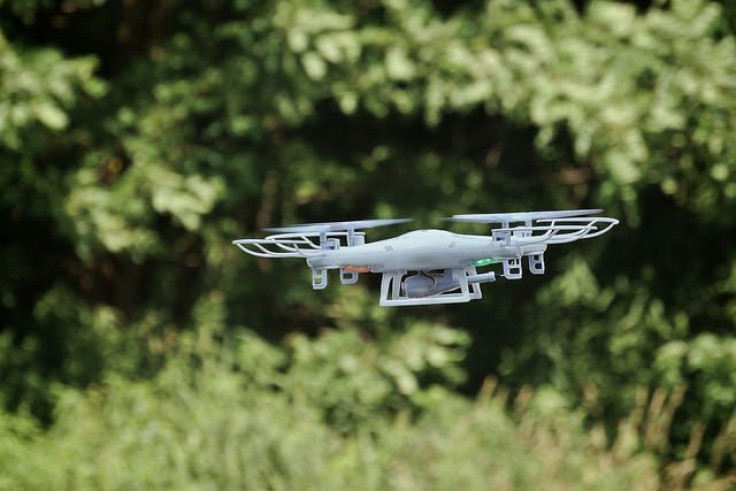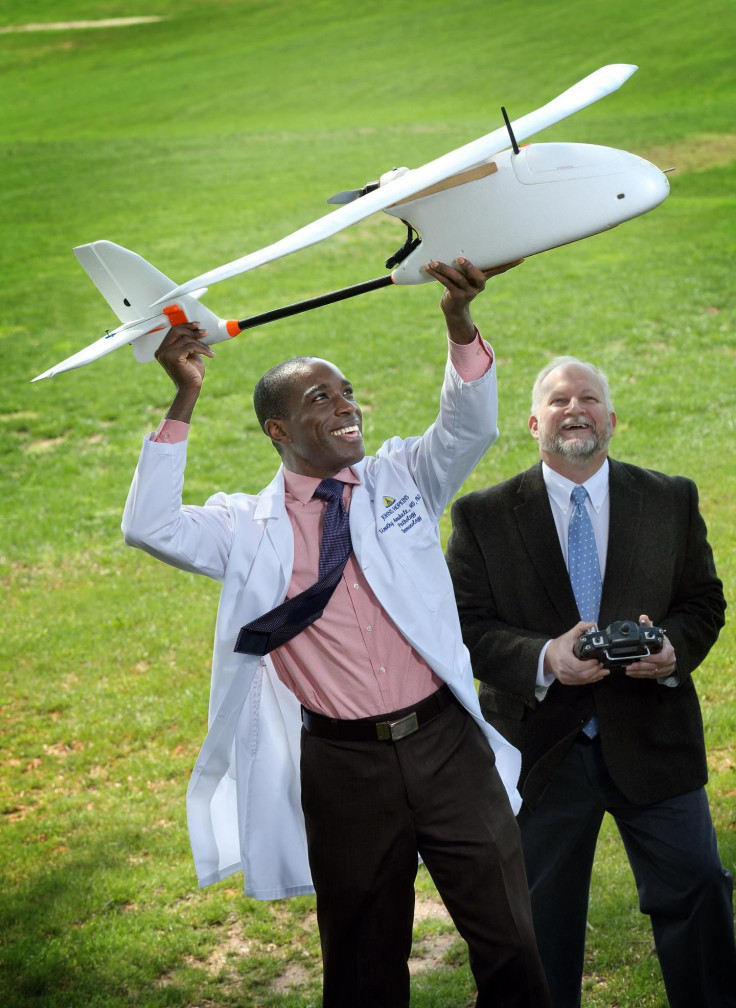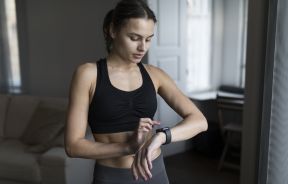Blood Work Unharmed By Drone Flight: New Study Opens Possibilities For Remote Area Health Care

Good news for those who need health care services in remote areas: Many common blood tests are not affected or harmed by up to 40 minutes of travel time via hobby-sized drones, a Johns Hopkins study proved. Drones, the research suggests, could become the vehicle of choice to transport blood tests and results in areas that lack passable roads.
“A drone could go 100 kilometers in 40 minutes,” Dr. Timothy Amukele, a pathologist at the Johns Hopkins University School of Medicine, stated in a press release. “They're less expensive than motorcycles and are not subject to traffic delays, and the technology already exists for the drone to be programmed to 'home' to certain GPS coordinates, like a carrier pigeon.”
To begin his study, Amukele and his colleagues collected a total of six blood samples each from 56 healthy volunteers at the Johns Hopkins Hospital. Next, they drove all the samples to a flight site about an hour's drive from the hospital. There, half of the samples were packaged to protect them and prevent leakage during their flight. Then, the team loaded these packed samples into a hand-launched fixed-wing drone that was flown around for periods of six to 38 minutes. The drone flights stayed below 328 feet and were conducted in an unpopulated area, in keeping with applicable aviation regulations. Temperatures reached into the 70s that day.

Next, all the samples were driven back from the drone field to the laboratory, where they underwent 33 of the most common tests, including sodium, glucose, and red blood cell counts.
Comparing lab results, the drone-flown blood tests mostly agreed with the non-drone-flown blood tests. The scientists had worried most about the sudden acceleration at the launch and the jostling at the landing. Amukele noted that "such movements could have destroyed blood cells or prompted blood to coagulate,” yet the study showed all the manhandling of blood samples did not affect them. Importantly, the reason the researchers drove all the samples to and from the hospital is because many private practice doctors' offices transport blood work to nearby or somewhat distant labs.
How did the blood samples fare? Only one test for carbon dioxide (the bicarbonate test) yielded different results, but whether this was due to the time lag or the transport method, the scientists do not know.
“The ideal way to test," said Amukele with a smile, "would be to fly the blood around immediately after drawing it, but neither the FAA nor Johns Hopkins would like drones flying around the hospital."
Still, as the authors noted in their conclusion, "overall concordance, based on clinical stratification (normal versus abnormal), was 97 percent. Length of flight had no impact on the results."
Given this successful proof-of-concept study, Amukele, who is also the director of a professional collaboration between Johns Hopkins and Uganda’s Makerere University, says the next step is a pilot study in Africa where health care clinics are sometimes 60 miles (or more) from labs. Going forward, the team hopes to perfect their packaging technique while testing a wider range of blood samples, some from unhealthy volunteers, in order to flesh out the full reporting range.
Source: Amukele TK, Sokoll LJ, Pepper D, Howard DP, Street J. Can Unmanned Aerial Systems (Drones) Be Used for the Routine Transport of Chemistry, Hematology, and Coagulation Laboratory Specimens? PLOS ONE. 2015.



























